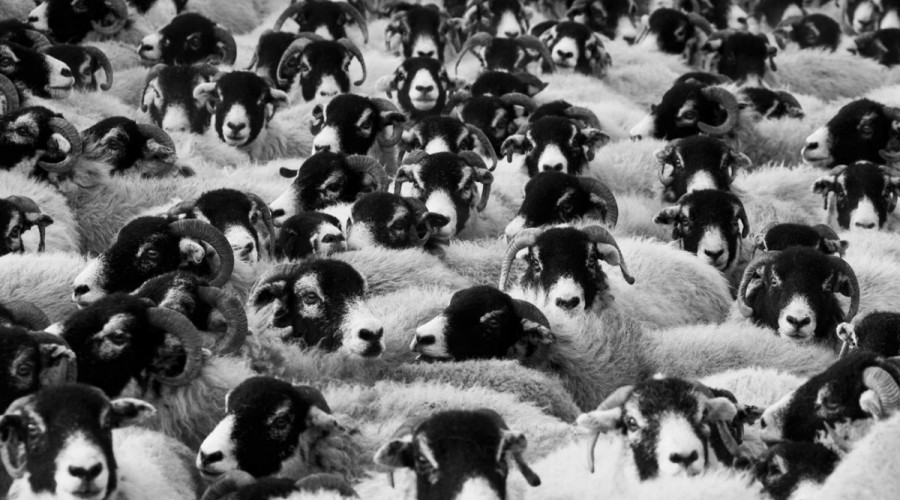
Living in Harmony
I have, for some time now, been exploring the implications of Walter J. Ong’s Orality and Literacy. Ong’s work on orality and literacy is especially relevant for educational history in Canada. The tragedy of Canada’s residential schools has left generational scars on the students who were forced into a “lettered” society that cared not for the oral values of their culture. Today is Manitoba Day, which marks the 151st anniversary of the founding of the province, an act of government that would not have been possible without paper, an alphabetic writing system, and the laws which are created by such use of media. In an effort to reconcile an awareness of oral communication with the “literacy everything” agenda of modern education, I believe an exploration of oral storytelling in the classroom is one effective approach to addressing the communication breakdown that played no small role in Canada’s residential schools. Always on the lookout for creative ways to implement the TRC’s 94 calls to action in the classroom, I revisited Basil Johnston’s traditional Anishinaabe story, “Buzzards” (from the collection Living in Harmony). Johnston’s tale teaches us about the birds known as buzzards, or vultures, and their fall from grace.
Once, long ago, buzzards were the peers of eagles, flying high and proud with great skill, but now they are outcasts. They look dishevelled, smell bad, and have shrivelled heads and faces. Buzzards no longer kill their own food, instead they must wander aimlessly waiting for something to die. If nothing dies, the buzzards will themselves die. Johnston’s account of the “Buzzards” outlines the events that transpired which resulted in their present state. A long time ago there was a hunter named Nana’b’oozoo who was preparing to cook a deer that he had recently killed in order to provide food for his family. As Nana’b’oozoo was preparing the meat, a swarm of buzzards descend upon his camp after sighting his campfire. Drooling over the meal that could potentially be theirs, the buzzards conspire to distract Nana’b’oozoo so they can steal his food. The buzzards call on their friend the wind, and the wind begins to blow the birch trees just enough to make them squeak. Nana’b’oozoo can take the distraction no more, and he climbs the
squeaking birch trees in order to drive a wedge between them so that the squeaking will stop. Inadvertently Nana’b’oozoo then finds himself wedged between the two birch trees and try as he might he cannot free himself. The buzzards seize their chance, and fly down from the trees to devour the meat as Nana’b’oozoo screams at them to stop. Then in the blink of an eye the buzzards fly off as a pack of snarling wolves emerge from the forest to finish the meal. Nana’b’oozoo screams at the wolves, but they too ignore him and continue to eat up all his deer meat. Finally, the next day, the wind blows a little harder than usual which is just enough to dislodge Nana’b’oozoo from the birch trees. He falls to the ground, winded. After re-gaining his breath, Nana’b’oozoo curses the buzzards for stealing his food. Thereafter, buzzards are no longer able to kill their own food. They must go hungry, eating only what others have left over.
The central issue in “Buzzards” is primarily that of one group taking advantage of another group—specifically the buzzards stealing Nana’b’oozoo’s deer meat. Nana’b’oozoo and his family are left to go hungry as result of the buzzards’ deceitful act, and the buzzards have to suffer the wrath of an angry hunter who has the ability to curse them. When Nana’b’oozoo gets stuck in the birch trees, the buzzards take advantage of him and proceed to eat all his food, and in doing so, becoming disrespecting free-loaders who have a feast at the expense of someone else’s abilities and labour. The story takes place in a forest a long time ago, outside of history. However, Anishinaabemowin dictionaries indicate that “time” does not stand alone in the prism of story that is the Anishinaabe tradition, time is always conditioned in some sense resulting in a greater specificity.1 In this sense, the story takes place: aabiding—at one time. The wind and the pack of wolves are simply supporting characters included to further the narrative. There is no clear resolution to the story: Nana’b’oozoo and his family will go hungry for now, and the buzzards will have to suffer the consequences of their free meal—cursed to be forever hungry, wandering the world aimlessly, waiting to find the left over food scraps of others.
The theme found throughout Living in Harmony is the reciprocal relationship between all of creation. Johnston admits that from time to time there are skirmishes between animals, but that after the conflict, “opponents return to live in harmony.”2 Despite humans’ intelligence, and the need for harmony, there is still conflict among many societies, especially colonial and Indigenous ones. There are two very pointed principles and values at play in Johnston’s re-telling of “Buzzards.” The well-known phrase “thou shalt not steal” is the main value, or moral, found in the story, and the resulting principle is that there are consequences if you do indeed become a thief. However, there are other elements at play. The buzzards, being the peers of eagles, have both the skill and intelligence to hunt for themselves. Their fall from grace is a result of using their cunning intelligence for the wrong application, mainly tricking Nana’b’oozoo to climb the birch trees where he gets trapped, then taking advantage of the situation by stealing the fruits of his labour, the deer meat. Of course these actions backfire for the buzzards when the wolves catch the scent of blood and come join the feast, thus scaring off the buzzards that have not entirely finished their free meal. By ignoring Nana’b’oozoo’s cries for help when he is stuck, as well as ignoring his warnings about the threat of a curse, the buzzards succumb to the temptation of their stomachs, sacrificing honour in the process, and ultimately receiving their just desserts: hunger, desperation, and the loss of their elegant flying skills.
The issues that I have identified as being foundational teachings in “Buzzards,” mainly that it is wrong to steal from others, and if you do there will be consequences, play out in interesting and hypocritical ways within Canadian settler-colonial governance. Firstly, the emphasis in European-based justice systems is to punish the socially deviant offender so as to protect members of society from harm.3 If, as is the case with Canada’s Indigenous peoples, an authoritarian government imposes rules that were not previously in existence among the people it seeks to conform or control, the people subjected to this rule will be a priori in a sense marginalized and disadvantaged. Glen Coulthard writes in Red Skin, White Masks, “since 1969 we have witnessed the modus operandi of colonial power relations in Canada shift from a more or less unconcealed structure of domination to a form of colonial governance that works through the medium of state recognition and accommodation.”4 Coulthard is pointing out that regardless of the shift in perspective, the goal is still the same—to dispossess Indigenous peoples of their lands and to limit their self-determining authority.5 To dispossess Indigenous peoples of their lands is, in a sense, stealing their lands much the same way the buzzards conspired to eat Nana’b’oozoo’s deer meat. A succinct quote from Frantz Fanon, author of Black Skin, White Masks, works well to expose the buzzards’ true colors: “For Hegel there is reciprocity; here the master laughs at the consciousness of the slave. What he wants from the slave is not recognition but work.”6 The buzzards act like slave masters, they want the fruits of Nana’b’oozoo’s labour, specifically the hunting, butchering, and cooking of the deer.
A novel way to improve relations between Indigenous peoples and Canada’s settler-colonial society would be to foster a greater understanding of the pre-existing oral tradition in Indigenous society. Before the arrival of the settlers, Indigenous laws were orally transmitted ways of keeping the peace, which were integral to the culture.7 In an interview with Brock Pitawanakwat, Basil Johnston explains that traditional stories reflect the way that Indigenous people perceive the world.8 Johnston believes that stories are the ideal medium with which to convey Anishinaabe values to Western education systems, potentially reversing the damage done by Western Anthropologists who have continually misrepresented Indigenous people as having no concerns beyond mere survival.9 Stories are fundamental to Anishinaabe epistemologies and hermeneutics, contributing to knowledge of who they are, how they think, and how they interpret the world.10 If the complex matrix of life, which is integral to Anishinaabe philosophy, were seen to be an inclusive reality from a Western perspective, perhaps stories could be a way to forge a future based on respect and reciprocity between the Canadian Government and Canada’s Indigenous peoples.
Citation:
Cole, Jarrett. “Living in Harmony.” Winnsox, vol. 2 (2021).
ISSN 2563-2221


